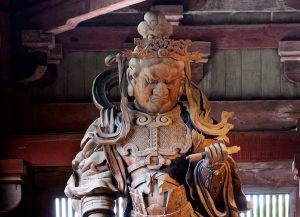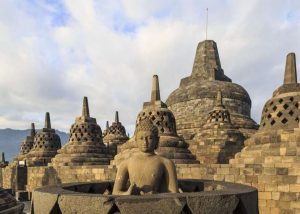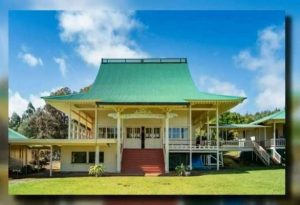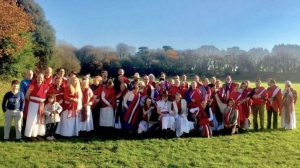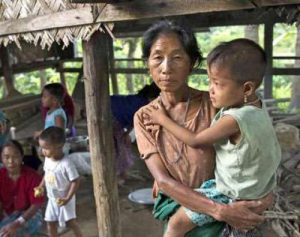
Shravasti was a dynamo of a city in the ancient world, home to nearly 1 million people in the Buddha’s lifetime during the 6th century BCE. Most Buddhists know where Shakyamuni Buddha was born and where he attained enlightenment, but the other six sites associated with him are not quite on the tips of Buddhist tongues. Drikung Kagyu Chetsang Rinpoche, patriarch of the Drikung Kagyu school of Vajrayana Buddhism, has brought Shravasti back into the sphere of awareness for Buddhists by establishing a Buddhist cultural center there, and with it, planting a field of hope.
His visionary effort is typical of the monumental accomplishments of Chetsang Rinpoche. Whether as a scholar, a teacher, a meditation adept, or as the leader of an exiled branch of Tibetan Buddhism, Rinpoche carries within himself an aristocratic heritage and the lifeblood of Buddhist practices and lifestyles. These days, Buddhists are united in stewardship of the environment, in cultural preservation, and in the spiritual and temporal well-being of the people who have traditionally lived in Buddhist places. Any one of these is a daunting challenge for which to design a response. Chetsang Rinpoche has succeeded in bringing all of these together at Shravasti.

These contemporary efforts reawaken the stories of Shravasti’s importance to Buddhism for more than 2,500 years. Buddha famously performed two miracles at Shravasti, displaying his supernatural powers to all who required such proof. He manifested and projected 1 million images of himself seated on a thousand-petaled lotus, and then emanated fire and water from his body. These have been called “The Twin Miracles,” and resonate with similar stories in other religions in which a battle of psychic powers was won.
These miracles, though, merely adorn the other actions associated with the Buddha. Most importantly Shravasti is where the Buddha conducted many of his own personal retreats, practicing various ascetic exercises. Legend says he made 24 four-month retreats there, meaning he spent a total of eight years in meditation in Shravasti. More sutras (teachings by the Buddha) were delivered at Shravasti than anywhere else. It was also the center of the Buddha’s patronage. One of his most generous patrons, King Pasenadi of Kosala, of which Shravasti was then a part, built a monastery for him there, where several other major patrons also lived.

Today, however, Shravasti is classified as one of the most backward districts in India, one of the poorest, and one in which the majority of the population is made up of minority tribal cultures. It is a desolate place with few modern amenities and little in the way of hospitality infrastructure catering to international visitors. But it was here, two years ago, that Chetsang Rinpoche broke ground for a Buddhist cultural center, hosting a cultural festival, along with prayers and speeches under a tent and the starry canopy of the sky. A temporary stage equipped with the latest lighting and video-playback technology was supplied by Buddhist patrons from Malaysia.
Drikung monks skillfully managed the entire affair, while the production equipment was operated by Indian professionals hired especially for the occasion. The 2nd Great Shravasti Buddhist Cultural Assembly was an efficiently run operation, in the middle of nowhere, with a broad invitation for ethnicities and cultures to attend and be represented and expressed. At the same time, messages and actions on the environment were introduced, and thousands of people were fed over the course of the two-day event.

Chetsang Rincpoche’s main objectives for establishing the Shravasti project are to bring together Buddhists from different parts of the world to engage in dialogue, and to promote the preservation of Buddhist culture and the natural environment. Participants attended from Bhutan and Nepal, as well as Aurangabad, Kinnaur, Ladakh, Saharanpur ,Sikkim, and Spiti, in India. Others came from Bodh Gaya, Dehradun, Hardiwar, Nagpur, New Delhi, and Shravasti itself.

The objectives of those assisting endangered dances include staging new events that allow authentic expression, connection with other performers of endangered traditions, genuine cultural appreciation, and sustaining the vital cultural identity of compromised and displaced populations. In the last two years, Chetsang Rincpoche has convened nearly 20 different ancient dance traditions to perform in the tented and open-air concert that is the Great Shravasti Buddhist Cultural Assembly. This is an extraordinary accomplishment.
It is but one achievement in a long list of Rinpoche’s activities supporting ancient dances, from documenting the steps of Cham, to authoring a rare Drikung dance treatise. His invitations to monks and others to perform at the Great Shravasti Buddhist Cultural Assembly is an appeal few would turn down, out of sheer respect. His invitation is one that reaches far, to the most remote corners of the Himalayas; Chetsang Rinpoche has been at the forefront of recognizing the importance of dance, and using his voice to summon it.
The Drikung dances are among the longest and most complex of monastic dances, being full-blown representations of the meditation experience. They must continue if only to preserve the depth of expression and meaning in Buddhist dance, which varies greatly from monastery to monastery. It is now more important than ever that traditional Buddhist dance be maintained and performed with excellence.

What makes Buddhist culture is not the mere presence of monks and monastic practice, but a whole system of villages full of the practicing faithful, who connect with the monasteries through family ties, village subsistence, and cultural traditions. A Buddhist culture is embodied in both the monks and the villagers. At the 2nd Great Shravasti Buddhist Cultural Assembly in 2016, no monks performed, which was a great pity as people love the advanced skills and tantric concentration expressed by the monk dancers.
When both monks and villagers dance, a beautiful representation of the symbiotic relationship of monastic and village life is expressed in the ancient dances. This, too, is extraordinary, and something that sometimes happens at monasteries during Saka Dawa, or celebrations of the birthday of the Buddha throughout the Himalayas. Tantric Buddhism is itself a dancing culture embedded in dancing cultures.
At the 2nd Great Shravasti Buddhist Cultural Assembly, dancers represented at least three exiled Tibetan communities now living and studying in Tibetan schools in Dehradun. It can be easy to disregard dance as frivolous and unimportant. For an exiled community to be in a position to perform their own dances, costumed, and in true form, as a way to introduce themselves to others, after having been forced to flee their homes in fear for their lives, marks a return to life: a normalcy; an ancient, lasting, deeply meaningful, and consoling tradition of dance—an art made of life itself. At the Great Shravasti Buddhist Cultural Assembly, these dances are honored and admired, shared and enjoyed.

I took some delight in noting that the most popular dancing group was the rare Aryan Brogpa tribe from Dha. They live almost pre-modern lives, in stone homes in remote and difficult mountain terrain. Their dance is so old and simple that it hardly seems like anything, until they keep doing it, and keep doing it, and, in time, the ancient heartbeat that connects them comes pulsing through, loud and clear, with no end in sight. As any choreographer knows, when you tell everyone to do the same thing, the result will be endless variation. What the Brogpa began as a simple circular, pulsing pacing became complex, ancient, rich; full like the moon, humble and sincere.
Dancers from Bhutan and Nepal, from Dha, Dehradun, Kinnaur, Ladakh, and Lhodrak delighted the gathered crowds. The importance of sharing dances in this way cannot be overstated. Most villagers never get to see the dances of other villages. Most monks do not get to see the dances of other monasteries. It is encouraging, uplifting, and competitive in a healthy, happy way. The Bhutanese are the best dancers in the Himalaya, and their skill and natural grace is a jewel of Himalayan cultures. Whether a culture is stable, under siege, or on the run, an essential identity remains preserved within the dances; ancient dances that cross borders and become new in the eyes of others.

There are a growing number of cultural festivals in India and cropping up in the Himalaya. Some are government efforts, some commercial and targeting tourists, and others, like the Great Shravasti Buddhist Cultural Assembly, are motivated by high and compassionate aims. Cultures and generations are changing rapidly and many elements of traditions are being lost along the way.
Chetsang Rinpoche’s festival reinforces all his other work in teaching and environmental awareness, and will surely grow, despite the odds stacked against it. His use of dance consoles and reinforces communities in the Tibetan diaspora, and creates unprecedented collections of ancient dances that will ideally, in years to come, be properly documented for future generations. For Chetsang Rincpoche, unlike the tourism industry, dances are not commodities, and his contemporary ability to present them for what they are is remarkable.

Whenever a dance that is not created for a Western-style proscenium stage is placed on such a stage and instructed to “face front,” the dance is irrevocably altered. I would prefer not to have purple and green flashing lights during 600-year-old tribal dances, but people love it. It is exciting and out of the ordinary; a celebration. It is also simply what the Indian entertainment industry does all the time. But these are the complaints of a scholarly dance preservationist who seeks to make pristine records for posterity. Chetsang Rinpoche wants the dances to happen here and now, bringing joy and delight, uniting the hearts of high and low. Now, that is dance preservation.
See more



